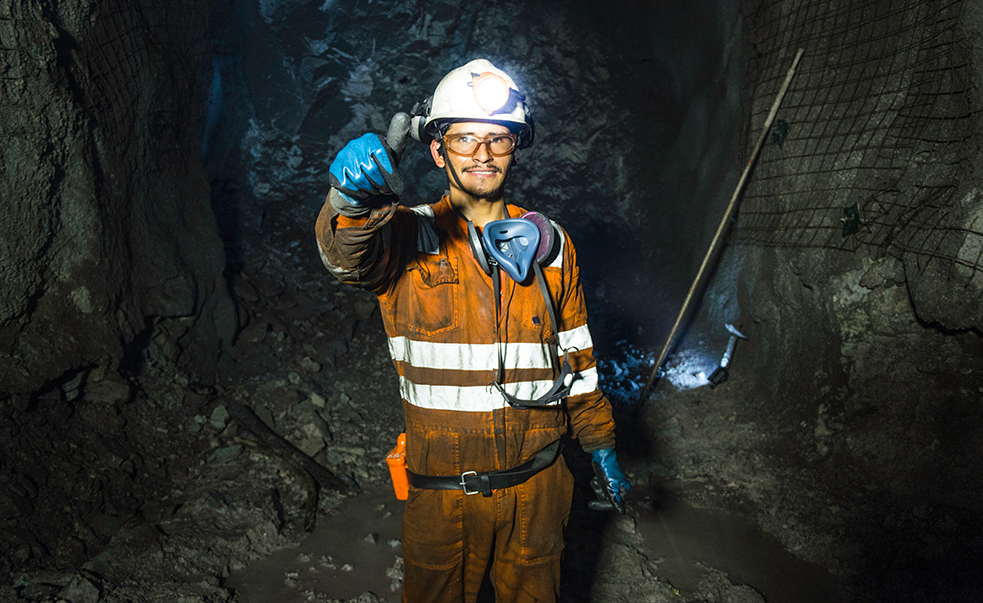What is the true cost of mining in the 21st century? How do industrial organizations ensure their network infrastructures are able to support the increasing demands and expectations being placed upon it by management, employees, regulatory and processes? Safety improvements and conditions across the mine site have made their way to the top of today’s news headlines and to the top of mine operators’ priority objectives. Mining is an inherently dangerous occupation and employee safety is now being given the attention it so deservingly requires.
Mines require 24/7 support, and a single second without communications support can affect the efficiency and safety of workers. Mining sites are often in remote locations with scarce access to telecommunications infrastructures, which can lead to untrustworthy and unreliable communications processes.
By utilising a robust communications infrastructure, it gives great ease to first responders who will aid rescue efforts should an accident occur. Firms must implement appropriate critical communication processes and deploy a mission-critical CCTV-ready network and communication system.
While it is true that communication – especially emergency communication – is part of the lifeblood of successful mines, equally as vital, is the network over which this data is delivered. When every second counts and every insight is of value, it must enable instant access to real-time voice, video and data without fail in an environment that is rugged and ever-changing, supporting continuous connectivity to people and assets that are constantly in motion across the mine.
With a compatible network in place, accidents and incidents could be minimised to near misses, or recorded, using footage and data from the network, to prevent similar instances in the future.
Critical communication and the need for reliable networks have been under much discussion in recent years, as mining firms move from man to machine. If mines can’t communicate with their people and machines, they cannot operate. Communications is a prerequisite before mining can take place, and a failsafe infrastructure is necessary for organisations to get the most out of their mines. If connectivity is lost, even briefly, the autonomous asset will shut down as a safety precaution. Any breaks in communications between operating machinery, field workers and the command centre create safety hazards, and can quickly expose employees to unnecessary risk.
While autonomous vehicles have been implemented to take the weight off workers’ shoulders, mines will always be hazardous environments, and the time it takes for first responders to be on site can often come down to the infrastructure that a mine possesses.
Providing mining equipment and personnel with the ability to simultaneously move and communicate, Kinetic Mesh® networks are being implemented into mines to provide versatile, smart communication, which is able to adapt quickly to changing topographies and conditions without the network ever failing. The network autonomously and continuously self-optimizes to deliver bandwidth-intensive applications in real-time, even when faced with adverse network conditions.
Developed after the devastating events of 9/11, where critical communication to and from the scene was hindered by the distinct lack of a robust network, Kinetic Mesh directly faces connectivity concerns with first responders in mind. By providing a living, healing, mobile network, Kinetic Mesh is able to withstand heavy traffic and environmental demands, making it an adaptable, scalable and readily deployable private wireless network.
With legacy infrastructure like fibre cabling not only unreliable but costly to install and maintain, Kinetic Mesh technology making its mark in the mining space validates the idea that a complete and unbreakable connected network can be a reality. Using an unlimited number of nodes, the Kinetic Mesh network is self-healing and is strengthened by adding nodes which can direct traffic via multiple peer connections simultaneously. It also does this without the need for a controller node. Due to the nature of set-up, there is no single point of failure and zero downtime as the nodes pass the information swiftly and securely from node to node.
Each mine is different, with its own issues and concerns. Deployed technology must be versatile, scalable and reliable, and able to adapt to current and future requirements of the organisation. With automation becoming more and more sophisticated and mines in the transition process of adopting this new technology, critical communications are more important than ever before, and making the move to a fail-safe technology like Kinetic Mesh is the only way forward.
Through fleet management and monitoring, mines can readily and remotely track the location and status of workers operating equipment throughout the site and are able to proactively identify potential equipment concerns or failures that could put those workers at risk.
If there is interference on any one frequency, Kinetic Mesh nodes will make use of one of the other available frequencies, meaning communication can be transferred and emergency services can be on the ground in record time.
Along with responding to critical situations, Kinetic Mesh networks also help to prevent the accidents by being easily implemented into autonomous vehicles. Autonomy takes safety a step further by allowing the mine to remove people entirely from the equation in potentially dangerous situations. Autonomous equipment and vehicles can be deployed to work in the riskiest parts of the mine, without the need for human intervention. In fact, automated mining assets can reduce the number of people working in dangerous areas by more than 50%.
However, these applications can only be successfully deployed to protect personnel if they are running on a mission-critical network. Any breaks in communications between operating machinery, field workers, and the command centre create safety hazards, and can quickly expose employees to unnecessary risk and keep management in the dark until it’s too late.🖉













